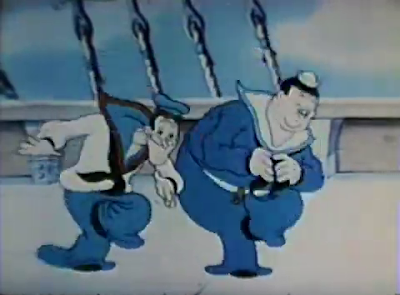NBC always gave the impression it was the first radio network, but that wasn’t the case. WEAF was purchased from A.T. and T. by NBC’s parent company, RCA, in 1926, and became the flagship of what was later known as the Red Network. WEAF had tied together a number of radio stations for joint broadcasts before RCA entered the picture, and had done so for several years. It was the station that founded network radio. The other station involved was owned by a man with a chain of department stores, John Shepard III.
When was the first network radio broadcast? The
Boston Globe of January 2, 1923 reported:
SIMULTANEOUS BROADCASTS BY WNAC, BOSTON, AND WEAF, NEW YORK
Radiophone Station WNAC, Boston, has arranged a radio broadcasting event which will be of special interest to the radio public. On the evening of Jan 4, by arrangement with Station WEAF, New York City, WNAC will be connected by direct long distance telephone wires with the broadcasting station in that city. By this means the two broadcasting stations—WEAF in New York City on 400 meters and WNAC in Boston on 360 meters—will broadcast simultaneously from the New York studio the regular program given in New York. This is the first time that two broadcasting stations have been operated from one studio.
From a technical standpoint, the control of a broadcasting station 200 miles distant by means of telephone lines is a most delicate problem. Special filters and repeater equipment carefully adjusted and tested by a corps of engineers are necessary to eliminate all distortion from the telephone circuits. The announcer, at the New York studio, will state that the program is being broadcast through two radio stations.
The evening’s program will include selections by some of America’s foremost instrumental and vocal artists.


To the left above, you see the New York
Tribune’s announcement in the “To-day’s Radio Program” column and to the right is the
Rochester Democrat’s column which goes into specific tunes. The
Globe’s listing was a little different. It read: “8 to 11 P M—Concert program originating at the studio of Station WEAF, and sent over the telephone land wires and sent broadcast from this station.”
How did the broadcast go?
Radio World, a weekly magazine, published an account, so to speak, in its January 27, 1923 issue. The report was more a PR exercise on the wondrous future of radio than on the actual broadcast.
Fifty Millions May Hear at Once, by Radio
A RECENT achievement in telephony indicates that it may soon be possible to radio a message into the ears of 50,000,000 Americans at the same time, says “The World,” New York.
A. H. Griswold, Assistant Vice-President of the American Telephone and Telegraph, was an invited guest at the annual dinner of the Massachusetts Bankers' Association at the Copley-Plaza Hotel in Boston. Mr. Griswold connected by wire a studio at No. 24 Walker Street, New York, where several artists were performing a radio program for the local radio district.
The New York program was played in Boston through the apparatus of a department store. Then, by wire, it was conducted to the banquet hall of the Copley-Plaza. Mr. Griswold put on a loud speaker and the New York program was transmitted to the thousand or more diners with the utmost distinctness.
It was the first time that a radio program in one district had been given simultaneously in another district. The New York station was WEAF, and that in Boston WNAC.
Telephone officials and scientists were enthusiastic over the prospect opened by the simultaneous broadcasting of a program from two radio stations more than 200 miles apart.
“Get the picture,” said one. “If it is possible and practicable to transmit the speaking or singing voice from New York to Boston at a single point, why cannot the same speaking voice be transmitted to thousands of points at the same time?
“There are thirteen millions of telephones in America—more, of course, than in any country in the world. It would take a lot of money—millions of dollars—to transmit a program given in one district to, say, forty districts. But if the necessary connections were made, as they were from Boston to New York, with forty other centers up and down the continent from the same point, the entire country could be supplied with the radio program coming from a single studio.
“That would mean that at least fifty million persons in America could hear the same song or the same speech at the same time.”
WNAC went back to regular programming the next day. But the experimental broadcast set the stage for the creation of the great radio networks of the Golden Age.






















































